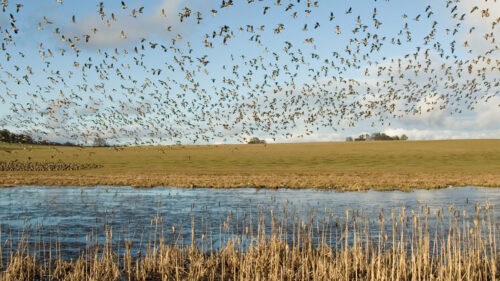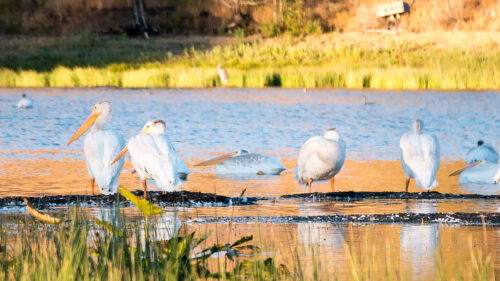Every autumn, as temperatures cool and leaves turn across Oregon, elk — Oregon’s largest land animal and the second-largest member of the deer family — undertake their annual mating ritual. The elk rut, as it’s known, is a weeks-long dance where bull elk unleash shrill bugle calls across open meadows and occasionally lock antlers with other worthy suitors to win over partners.
The rut is a sight unlike any other on the Oregon Coast, where herds of elk are routine sights all year long. You can even view them at several protected viewing areas that provide convenient, reliable wildlife-watching opportunities designed to keep both viewer and wildlife safe.
Here’s a look at what makes elk so unique, where to watch them all year long and how to have fun while doing so.
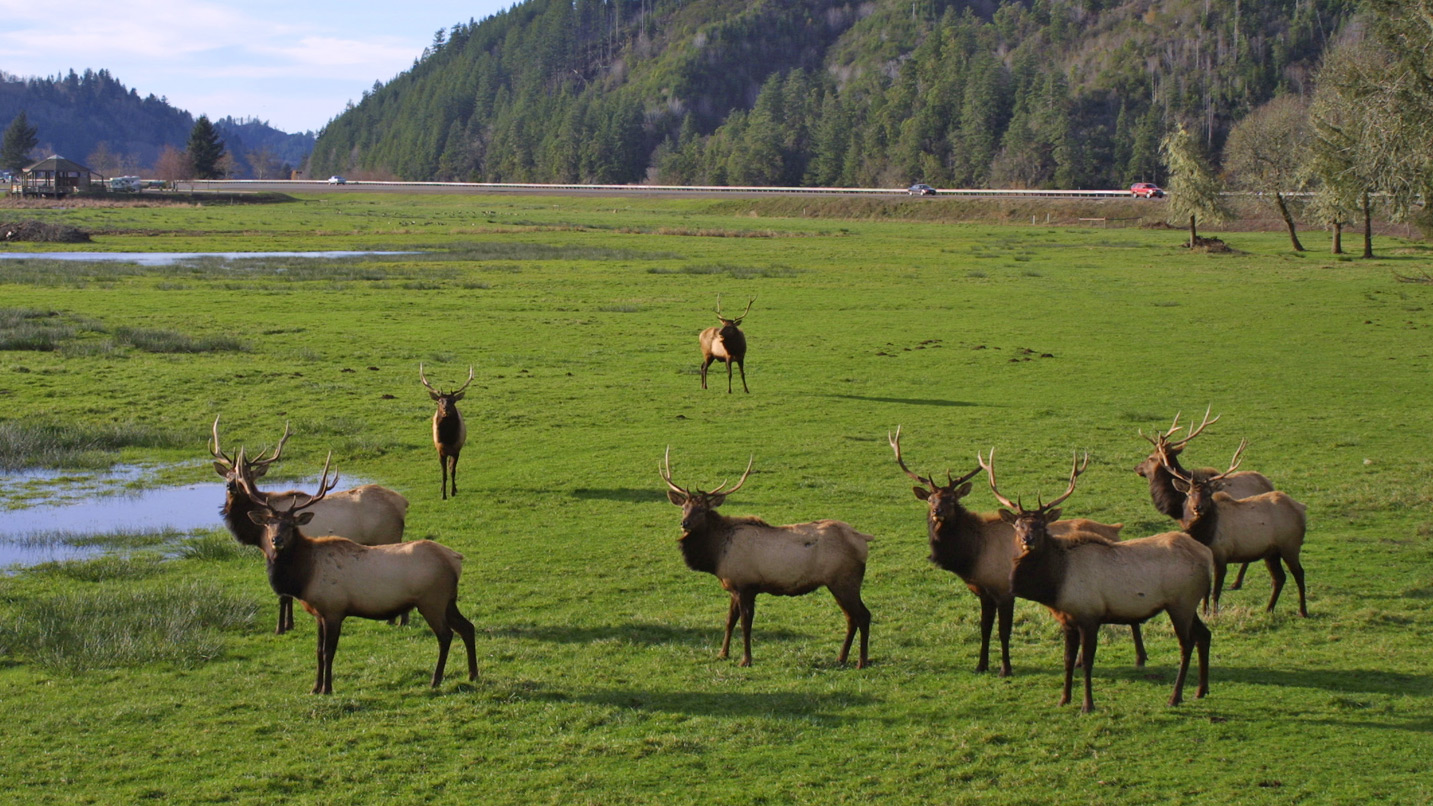
How to Identify Majestic Elk in Oregon
In many ways, elk are inextricably linked to Oregon. The animal has lived for thousands of years in all four corners of the modern-day state and even occupies a small place on the official Oregon state seal.
Today you’ll find two subspecies of elk in Oregon. According to Beth Quillian, public information officer with the Oregon Department of Fish & Wildlife, Rocky Mountain elk live on Oregon’s east side, while Roosevelt elk live west of the Cascade Range and along the Oregon Coast. Roosevelt elk tend to be larger and darker in color than their cousins to the east, while Rocky Mountain elk have larger sets of antlers that can weigh up to 40 pounds.
A mature bull Roosevelt elk may weigh 700 to 1,200 pounds, and cows can weigh 500 to 700 pounds. Aside from the size difference, you can usually tell bulls from cows by the presence of antlers. Only bulls have antlers, which are typically shed in early spring around the same time that calves are born.
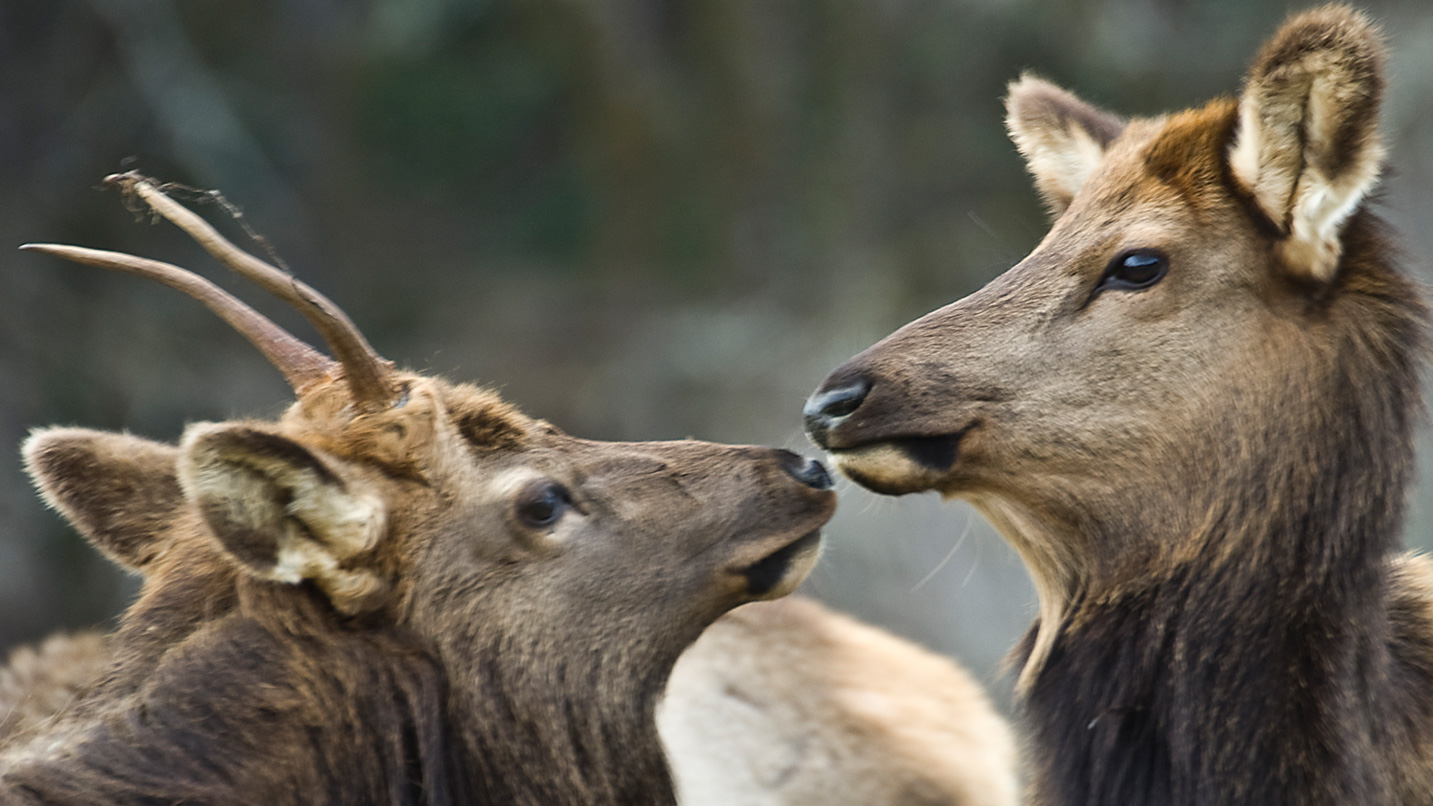
What Happens During the Annual Elk Rut?
Every autumn, usually in September and October, the elk rut occurs — when bulls compete amongst each other for the chance to mate with a herd’s cows.
You might notice a few specific rituals as part of the rut, which is far more complicated than swiping left or right within a maddening mobile app. The first is bugling — when bulls unleash a shrill, high-pitched whine that communicates strength to other males and acts as a kind of pick-up line for any cows that happen to be nearby. Next bulls form harems — groups of cows that they may mate with during the rut.
From there you might see aggressive bulls rubbing their antlers on trees or the ground to dissuade other males from getting close. If that warning fails, watch for competing bulls that may lock antlers in battles to demonstrate their power, with the losing bull usually returning to bachelorhood. “They’re just trying to assert their dominance and say, ‘Hey, I’m bigger and stronger than you, I deserve this chance to mate with a cow and you don’t,’” says Quillian.
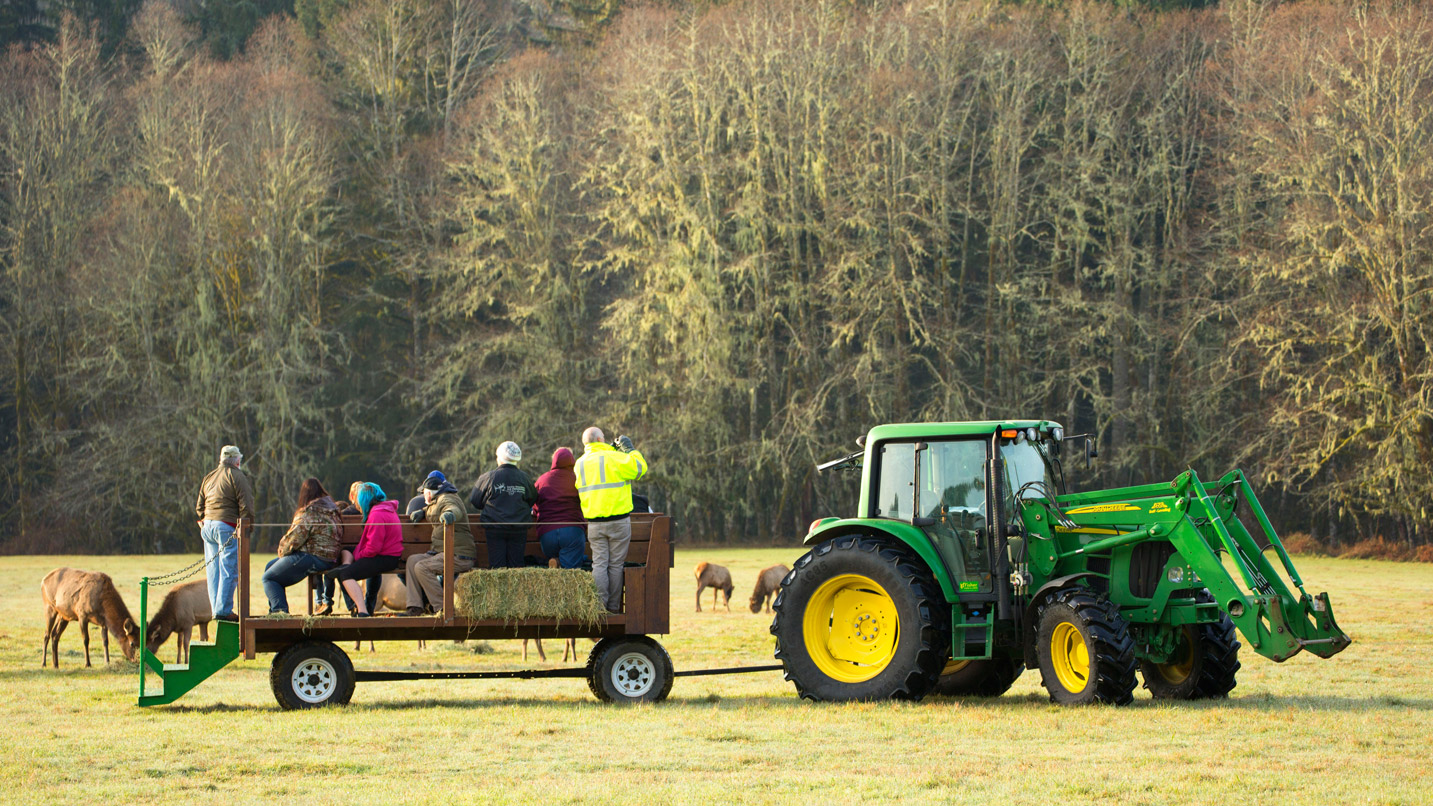
Great Places to Observe Elk
No matter when you visit, you may see elk darting in and out of forests, lounging in meadows and foraging in wide-open pastures along the Oregon Coast all year long. For your best chance of seeing elk, here are a few reliable viewing areas, what to expect and when to visit each.
If you’re headed to Astoria or Seaside, take State Route 202 off Highway 26 to Jewell Meadows Wildlife Area, roughly 27 miles southeast of Astoria in the Oregon Coast Range. Between November and April, up to 200 elk can be seen relaxing and feeding in meadows from four roadside viewing areas along the highway.
For a fun, safe way to see elk up close at Jewell Meadows, register for a free feeding tour with the Oregon Department of Fish & Wildlife — offered six days per week between December and February. As part of the hour-long, open-air wagon tour, visitors head to several areas across the refuge to help feed the resident elk. Tour reservations are required and can be made by calling 503-755-2264, beginning in December.
You can watch even more elk in meadows alongside roads near Astoria on the way to Fort Stevens State Park and the Lewis and Clark National Historical Park, where the National Park Service monitors this historic herd that sustained the Corps of Discovery as they overwintered with the help of Clatsop tribes during 1805-06.
North of Cannon Beach, sprawled across Tillamook Head, Ecola State Park is home to dense forests where elk can hide — and grasslands where they can graze in peace. Between fall and spring, watch for elk in the meadows immediately west of the park’s Ecola Point Day-Use Area.
Just inland from Reedsport, along Highway 38 and the near banks of the Umpqua River, sits the Dean Creek Elk Viewing Area — one of the only places on the Oregon Coast where you can count on seeing elk almost every day of the year. Here 60 to 100 elk patrol a mix of meadows, wetlands and forests on the preserve all year long. Interpretive panels provide background on the animal and tips for where to look.
After viewing the Roosevelt elk on the Coast, you may want to see their cousins, the Rocky Mountain elk, in Eastern and Central Oregon. Look for them at places like the Elkhorn Wildlife Area near Baker City, the Klamath Marsh National Wildlife Refuge east of Crater Lake National Park, and in meadows along Highway 20 between Bend and Sisters.
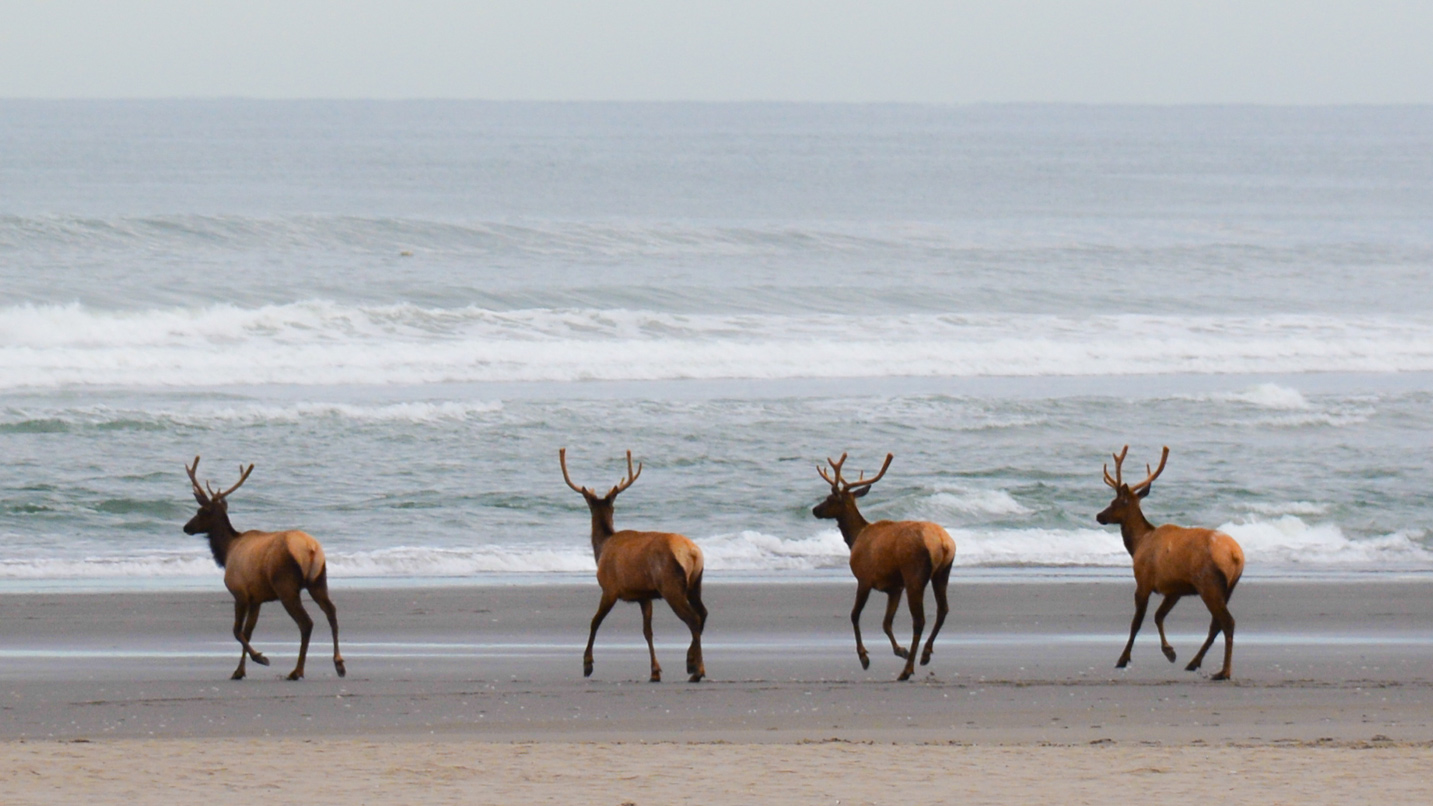
How to Stay Safe and Protect Wildlife
- Time your outing to when elk are most active — shortly after sunrise and just before sunset — for the best possible chance at seeing the animal do more than laze the day away. You’ll also have better luck when the weather is mild. Like humans, elk tend to retreat from the sun’s glare on warm days and run for cover in the midst of heavy rains and storms.
- Stay at least 75 feet away from elk — roughly two bus lengths — at all times. If humans get too close, especially during the fall rut, a bull may see the intruders as a threat to their harem and attack accordingly. “You just want to make sure that your presence is not disturbing them,” Quillian says.
- Do not feed the wildlife. Feeding elk can get the animals a little too used to human presence and can have negative impacts on the animal’s digestive system.
- Protect your pets by keeping them leashed at all times when viewing elk.

